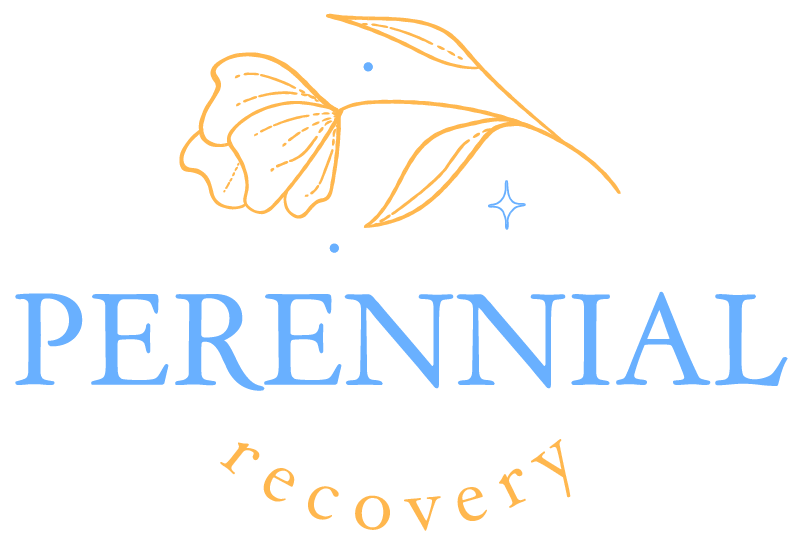The Rise of Accidental Addiction
The rise of accidental addiction has been a significant concern in the context of the ongoing opioid epidemic. Understanding the nature of accidental addiction and the factors contributing to its development is essential to address this pressing issue.

Understanding Accidental Addiction
Accidental addiction refers to the unintended or unexpected development of addiction to opioids or other substances. It often begins with legitimate medical use, such as the prescription of painkillers following surgery or injury. However, due to the highly addictive nature of opioids, some individuals may find themselves dependent on these drugs even when using them as prescribed.
The journey from innocent use to accidental addiction can be complex and multifaceted. It may start with the relief of physical pain, but over time, individuals may experience a psychological dependence on opioids, leading to a cycle of continuous use. Accidental addiction can affect people from all walks of life, regardless of age, gender, or socioeconomic background.
Factors Contributing to Accidental Addiction
Several factors contribute to the rise of accidental addiction in the context of the opioid epidemic. These factors can vary from individual to individual but often involve a combination of biological, environmental, and social factors. Understanding these influences is crucial to develop effective prevention and intervention strategies.
Factors
1. Biological Factors
Genetic predisposition to addiction
Previous history of substance abuse
Co-occurring mental health disorders
2. Environmental Factors
Easy access to prescription opioids
Influence of peers or family members with substance abuse issues
Exposure to traumatic events or chronic stress
3. Social Factors
Misinformation about the risks and benefits of opioids
Stigma surrounding addiction and seeking help
Limited access to alternative pain management options
Recognizing and addressing these factors is vital to prevent accidental addiction and mitigate the impact of the opioid epidemic on individuals and society as a whole. By focusing on education, awareness, and alternative pain management strategies, we can work towards a future where accidental addiction is no longer a tragic consequence of legitimate medical use.
Unveiling the Opioid Epidemic
The opioid epidemic has emerged as a significant public health crisis, impacting communities across the globe. Understanding the scope of this epidemic and its consequences is crucial in addressing and finding solutions to this complex issue.

Overview of the Opioid Crisis
The opioid crisis refers to the widespread misuse and addiction to opioid drugs, including prescription painkillers, heroin, and synthetic opioids like fentanyl. Opioids are highly potent substances that interact with the brain’s receptors, providing pain relief and inducing feelings of euphoria.
Unfortunately, the misuse of opioids has led to a devastating epidemic. According to the Centers for Disease Control and Prevention (CDC), from 1999 to 2019, almost 500,000 people in the United States died from an opioid overdose. The crisis has also had far-reaching economic consequences, with the cost of healthcare, treatment, and criminal justice expenses associated with opioid misuse reaching billions of dollars each year.
Impact of Opioid Abuse on Society
The impact of opioid abuse extends beyond individual lives, affecting families, communities, and society as a whole. Some key consequences of the opioid epidemic include:
- Loss of lives: Opioid overdoses have claimed countless lives, leaving families and communities devastated by the untimely deaths of loved ones.
- Healthcare burden: The strain on healthcare systems due to opioid-related emergencies, hospitalizations, and treatment has been substantial. The financial burden on individuals, insurance providers, and government-funded healthcare programs has been significant.
- Economic implications: The opioid crisis has had far-reaching economic ramifications. The loss of productivity, increased healthcare costs, and the strain on social services have placed a heavy burden on local, state, and national economies.
- Social and emotional consequences: Families and communities affected by opioid addiction often face emotional and social challenges. The stigma associated with addiction can isolate individuals and hinder their ability to seek help and support.
- Secondary effects: The opioid crisis has led to an increase in other societal issues, such as an uptick in criminal activity, strain on the foster care system due to parental addiction, and the spread of infectious diseases through needle sharing.
Understanding the severity of the opioid epidemic and its impact on society is crucial in developing comprehensive strategies to prevent addiction, provide effective treatment, and support individuals and communities affected by this crisis.
The Tragic Consequences
As the opioid epidemic continues to unfold, the tragic consequences of accidental addiction are becoming increasingly apparent. This section sheds light on the personal stories of those who have experienced accidental addiction and explores the profound effects of opioid dependency on individuals and their families.

Personal Stories of Accidental Addiction
Behind the statistics and data lie the personal stories that highlight the devastating impact of accidental addiction. These stories provide a glimpse into the lives of individuals who innocently fell victim to the allure of prescription opioids, only to find themselves trapped in a cycle of dependency.

These personal narratives serve as a reminder that accidental addiction can happen to anyone, regardless of age, background, or socioeconomic status. They underscore the urgent need for prevention, education, and accessible treatment options to combat this epidemic.
Effects of Opioid Dependency on Individuals and Families
The effects of opioid dependency extend far beyond the individual struggling with addiction. They permeate into the lives of family members and loved ones, leaving a profound impact on their emotional, physical, and financial well-being.

The ripple effect of opioid dependency can be overwhelming, as families grapple with the challenges of supporting their loved ones while navigating the complexities of addiction. Understanding the full scope of these effects is crucial in developing comprehensive support systems and resources to address the needs of both individuals struggling with addiction and their families.
By sharing personal stories and acknowledging the far-reaching effects of opioid dependency, we can foster empathy, raise awareness, and work towards effective solutions to combat the tragic consequences of accidental addiction. It is through education, prevention, and compassionate support that we can help individuals and families affected by the opioid epidemic on their journey to recovery and a brighter future.
Addressing the Epidemic
The opioid epidemic calls for urgent action and a comprehensive approach to address the devastating consequences of accidental addiction. To combat this crisis, various strategies for prevention and treatment options, along with the establishment of support systems, are being implemented.
Strategies for Prevention
Prevention plays a crucial role in curbing the opioid epidemic. By focusing on education, awareness, and policy changes, we can aim to reduce the risk of accidental addiction. Some key strategies for prevention include:
- Education and Awareness Programs: Implementing educational programs to increase public awareness about the dangers of opioids, proper pain management, and the risks of addiction.
- Prescription Guidelines: Developing and enforcing guidelines for healthcare professionals on responsible prescribing practices, emphasizing alternative pain management techniques, and closely monitoring opioid prescriptions.
- Drug Take-Back Programs: Establishing and promoting safe and convenient methods for the disposal of unused or expired prescription opioids to prevent their misuse.
- Enhanced Prescription Drug Monitoring Programs: Strengthening state-level prescription drug monitoring programs to track and identify potential misuse or overprescribing of opioids.
- Reducing Stigma: Promoting a compassionate and non-judgmental environment to encourage individuals struggling with addiction to seek help without fear of judgment or discrimination.
Implementing these prevention strategies can help minimize the risk of accidental addiction and reduce the overall impact of the opioid epidemic on individuals and communities.
Treatment Options and Support Systems
Addressing the opioid epidemic requires a comprehensive approach that includes effective treatment options and robust support systems. These resources aim to assist individuals in overcoming addiction and rebuilding their lives. Some common treatment options and support systems for opioid addiction include:

By offering a range of treatment options and support systems, individuals struggling with opioid addiction can find the assistance they need to overcome their dependency and rebuild their lives.
Addressing the opioid epidemic requires a multi-faceted approach that combines prevention strategies, effective treatment options, and robust support systems. By implementing these measures, we can work towards minimizing the impact of accidental addiction and providing individuals and communities with the necessary resources to combat the opioid crisis.
Moving Towards Solutions
To combat the devastating impact of accidental addiction and the opioid epidemic, various strategies and initiatives have been put in place. These efforts aim to raise awareness, advocate for change, and provide support to those affected. Two key approaches in addressing this crisis are advocacy and awareness campaigns, as well as government and healthcare initiatives.
Advocacy and Awareness Campaigns
Advocacy and awareness campaigns play a crucial role in combating the opioid epidemic. These campaigns aim to educate the public about the risks associated with opioid misuse, promote responsible prescribing practices, and reduce the stigma surrounding addiction. By raising awareness, they aim to prevent new cases of accidental addiction and encourage early intervention for those already affected.
These campaigns often use various mediums to reach a wide audience, including television, radio, social media, and community events. They provide information on the dangers of opioids, signs of addiction, and available resources for help. Additionally, they may feature personal stories of individuals who have overcome addiction or been impacted by it, humanizing the issue and encouraging empathy and understanding.
Government and Healthcare Initiatives
Governments and healthcare organizations have taken significant steps to address the opioid epidemic and provide support to individuals battling addiction. These initiatives focus on prevention, treatment, and harm reduction strategies.
Prevention efforts include implementing stricter regulations on opioid prescribing practices, educating healthcare professionals about alternative pain management methods, and promoting safe disposal of unused medications. Governments also work to improve access to naloxone, a medication that can reverse opioid overdoses, by making it more readily available to first responders and community members.
In terms of treatment, governments and healthcare organizations have expanded access to evidence-based interventions such as medication-assisted treatment (MAT) and counseling services. MAT combines medications, such as methadone or buprenorphine, with behavioral therapies to help individuals manage their addiction and reduce the risk of relapse.
Furthermore, governments allocate funding for addiction treatment programs and support networks, aiming to increase the availability and affordability of services. These initiatives also prioritize the integration of addiction treatment into mainstream healthcare systems, reducing barriers to access and ensuring comprehensive care.
By combining advocacy and awareness campaigns with government and healthcare initiatives, society can move closer to finding effective solutions to the opioid epidemic. These collective efforts strive to prevent new cases of accidental addiction, provide support and treatment for those already affected, and ultimately reduce the devastating impact of this crisis on individuals, families, and communities.
The Road to Recovery
Recovering from opioid addiction is a challenging journey that requires commitment, support, and a comprehensive approach. Overcoming opioid addiction involves two crucial aspects: overcoming the addiction itself and rebuilding lives and communities affected by the opioid epidemic.
Overcoming Opioid Addiction
To overcome opioid addiction, individuals need a combination of medical treatment, therapy, and support. Here are some common approaches in the road to recovery:
- Medication-Assisted Treatment (MAT): MAT combines medication, such as methadone, buprenorphine, or naltrexone, with counseling and behavioral therapies. These medications help reduce withdrawal symptoms and cravings, making it easier for individuals to focus on their recovery.
- Counseling and Therapy: Counseling and therapy play a vital role in addressing the psychological and emotional aspects of addiction. Individual counseling, group therapy, and family therapy can help individuals understand the underlying causes of their addiction, develop coping mechanisms, and rebuild healthy relationships.
- Support Groups: Peer support groups, such as Narcotics Anonymous (NA) and SMART Recovery, provide a supportive environment where individuals can share their experiences, gain insights, and receive encouragement from others who have faced similar challenges.
- Holistic Approaches: Complementary therapies like yoga, meditation, acupuncture, and art therapy can support the recovery process by promoting relaxation, stress reduction, and overall well-being.
It’s important to note that everyone’s journey to recovery is unique, and treatment plans should be tailored to individual needs. Professional guidance and medical supervision are essential in determining the most suitable approach for each person.
Rebuilding Lives and Communities
Recovering from opioid addiction goes beyond individual efforts; it requires collective action to rebuild lives and communities impacted by the opioid epidemic. Here are some key areas that need attention:
- Education and Awareness: Raising awareness about the risks of opioid addiction, proper pain management, and available resources is crucial. Educating healthcare providers, the general public, and schools can help prevent future cases of accidental addiction.
- Community Support Programs: Strengthening community support programs, such as recovery centers, sober living homes, and employment assistance, can provide individuals in recovery with the necessary resources and support to rebuild their lives.
- Reducing Stigma: Addressing the stigma associated with addiction is essential in creating a supportive environment for individuals in recovery. Promoting empathy, understanding, and compassion can help reduce barriers to treatment and encourage individuals to seek help without fear of judgment.
- Legislation and Policy Changes: Implementing and enforcing policies that regulate opioid prescription practices, increase access to treatment and recovery services, and support harm reduction initiatives are vital in combating the opioid epidemic at a systemic level.
Recovery is a long-term process, and ongoing support is crucial for individuals to maintain sobriety and rebuild their lives. By combining individual efforts with community resources and systemic changes, we can work towards healing and rebuilding lives and communities affected by the opioid epidemic.
Sources
https://mana.md/accidental-addiction-and-the-opioid-epidemic/
https://www.addictioncenter.com/opiates/opioid-epidemic/
https://ncdoj.gov/responding-to-crime/opioid-epidemic/




